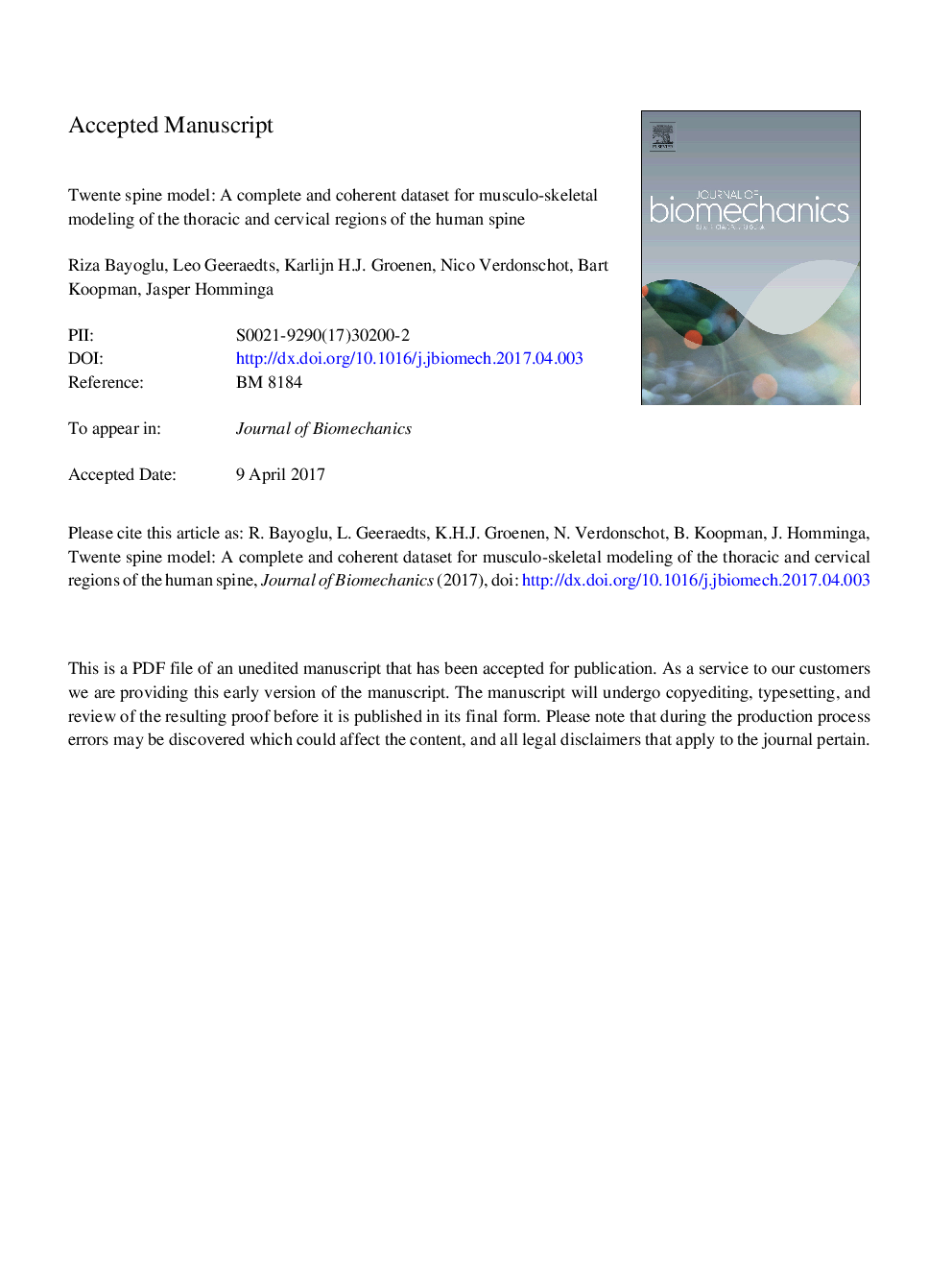| Article ID | Journal | Published Year | Pages | File Type |
|---|---|---|---|---|
| 5032020 | Journal of Biomechanics | 2017 | 26 Pages |
Abstract
Musculo-skeletal modeling could play a key role in advancing our understanding of the healthy and pathological spine, but the credibility of such models are strictly dependent on the accuracy of the anatomical data incorporated. In this study, we present a complete and coherent musculo-skeletal dataset for the thoracic and cervical regions of the human spine, obtained through detailed dissection of an embalmed male cadaver. We divided the muscles into a number of muscle-tendon elements, digitized their attachments at the bones, and measured morphological muscle parameters. In total, 225 muscle elements were measured over 39 muscles. For every muscle element, we provide the coordinates of its attachments, fiber length, tendon length, sarcomere length, optimal fiber length, pennation angle, mass, and physiological cross-sectional area together with the skeletal geometry of the cadaver. Results were consistent with similar anatomical studies. Furthermore, we report new data for several muscles such as rotatores, multifidus, levatores costarum, spinalis, semispinalis, subcostales, transversus thoracis, and intercostales muscles. This dataset complements our previous study where we presented a consistent dataset for the lumbar region of the spine (Bayoglu et al., 2017). Therefore, when used together, these datasets enable a complete and coherent dataset for the entire spine. The complete dataset will be used to develop a musculo-skeletal model for the entire human spine to study clinical and ergonomic applications.
Related Topics
Physical Sciences and Engineering
Engineering
Biomedical Engineering
Authors
Riza Bayoglu, Leo Geeraedts, Karlijn H.J. Groenen, Nico Verdonschot, Bart Koopman, Jasper Homminga,
